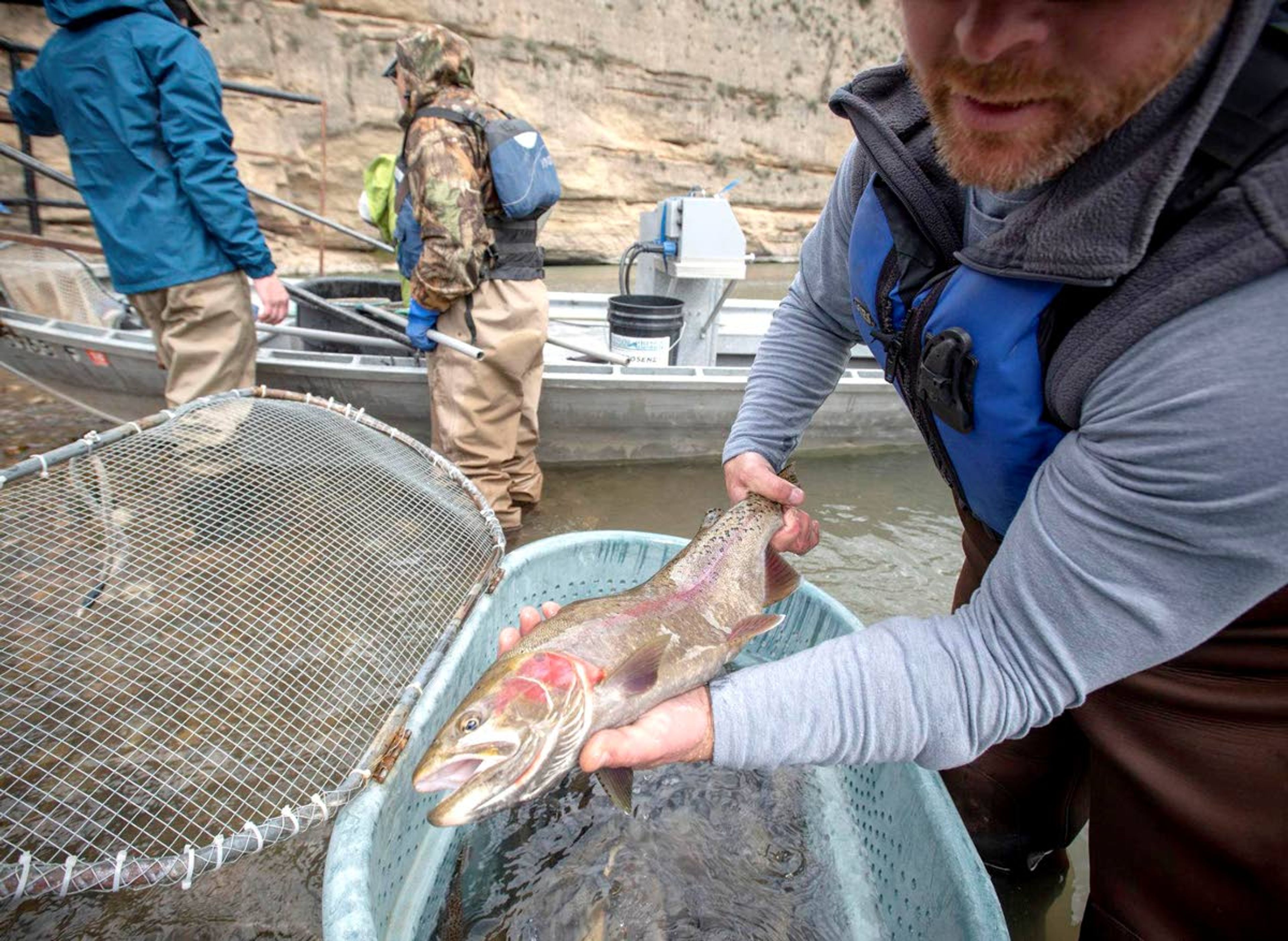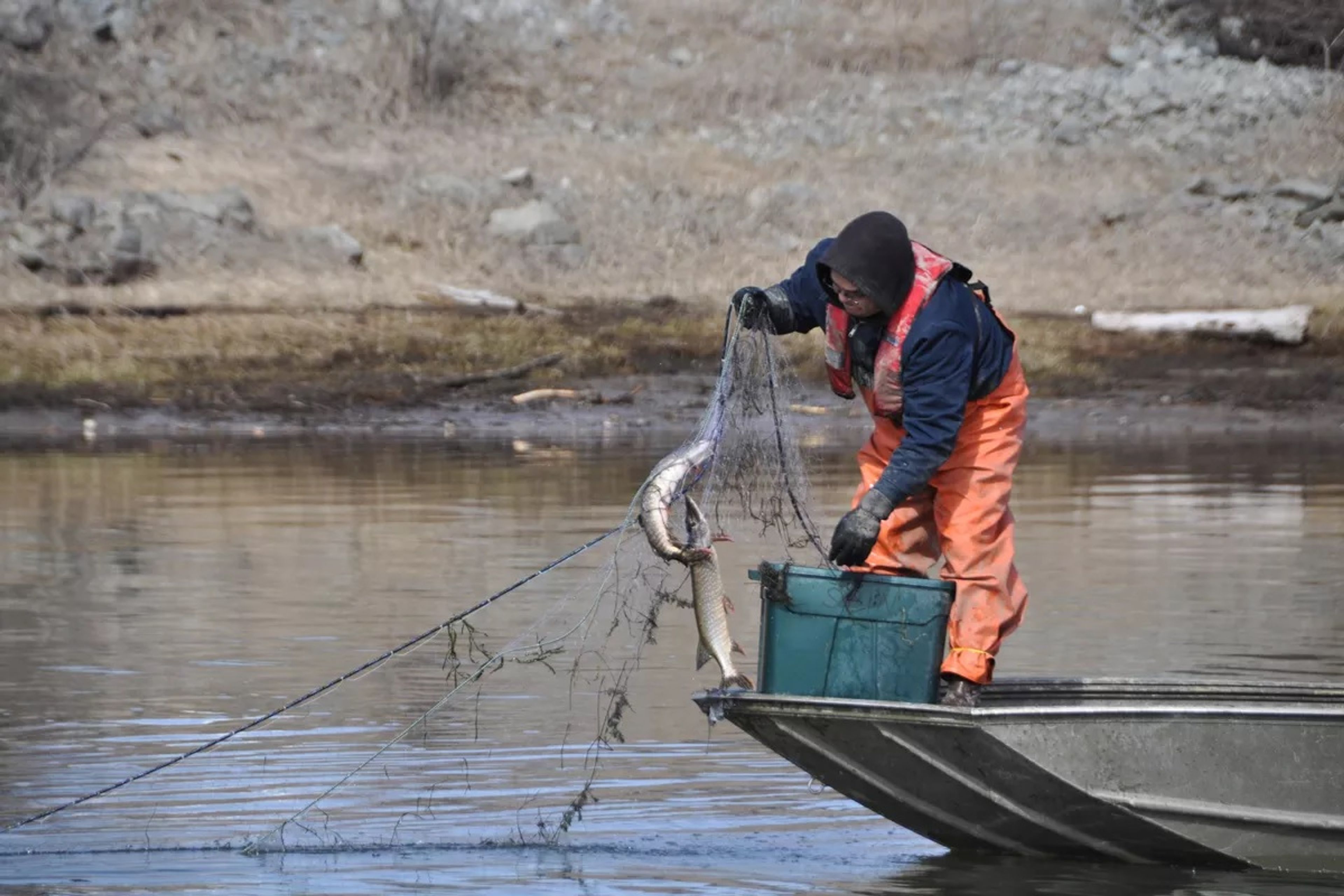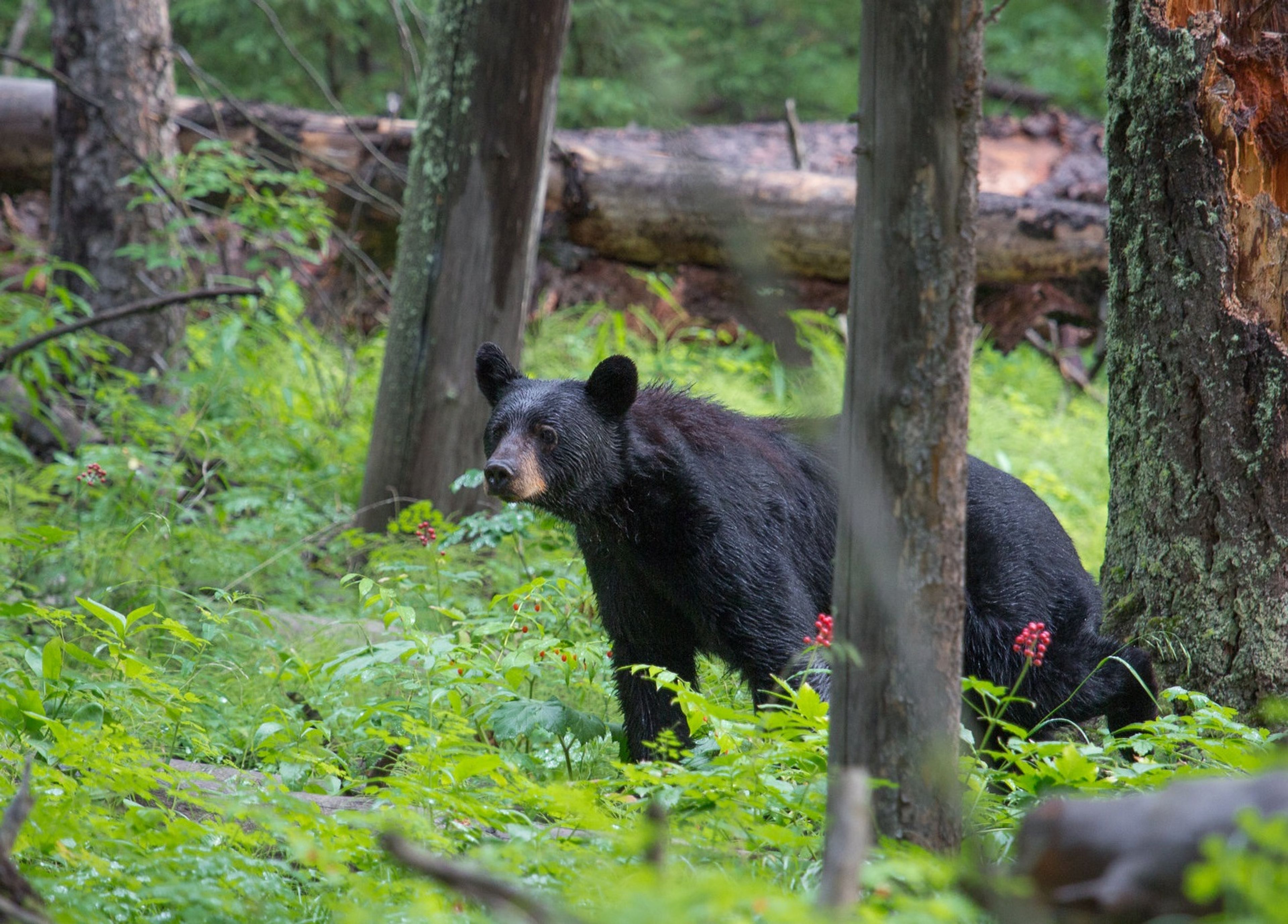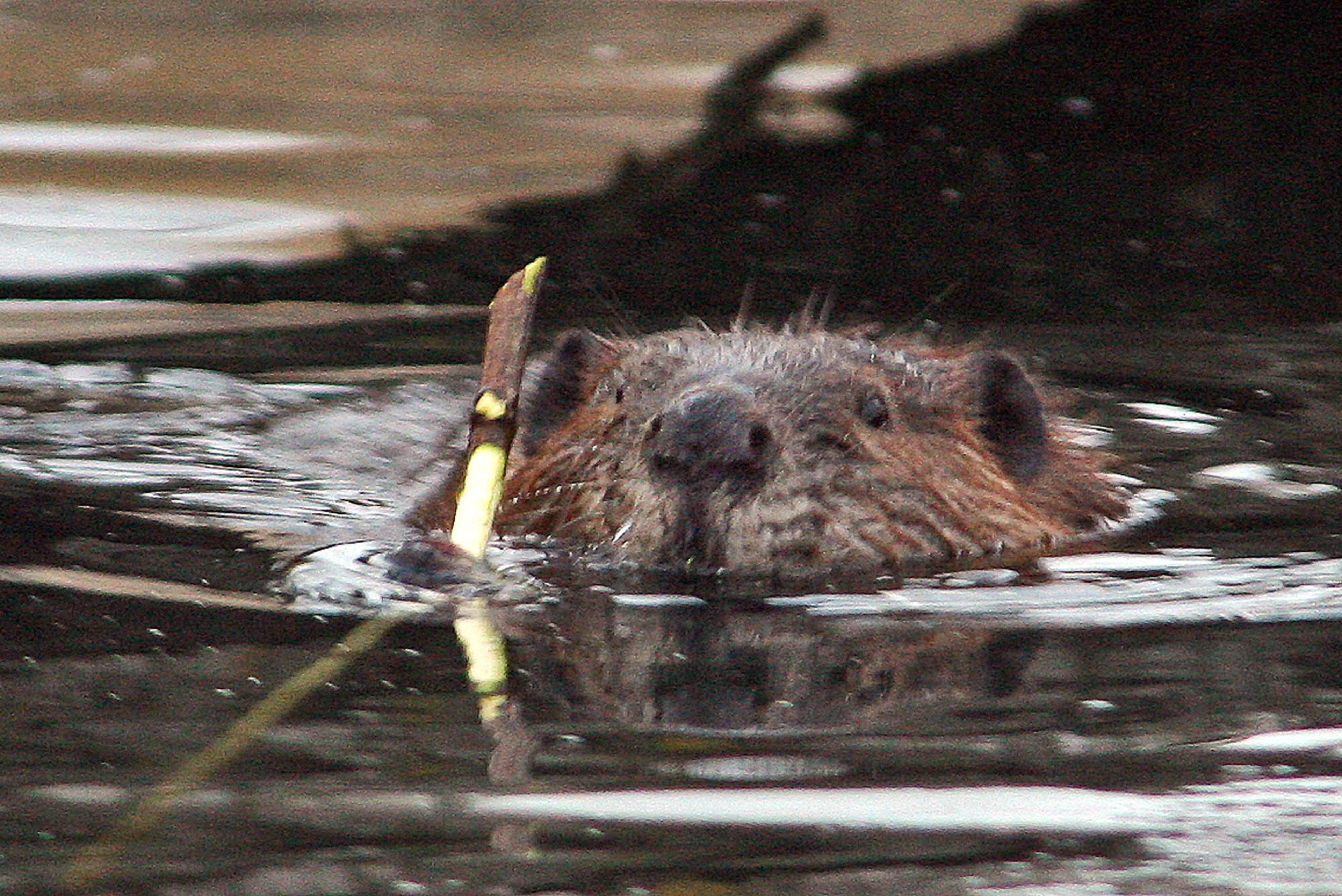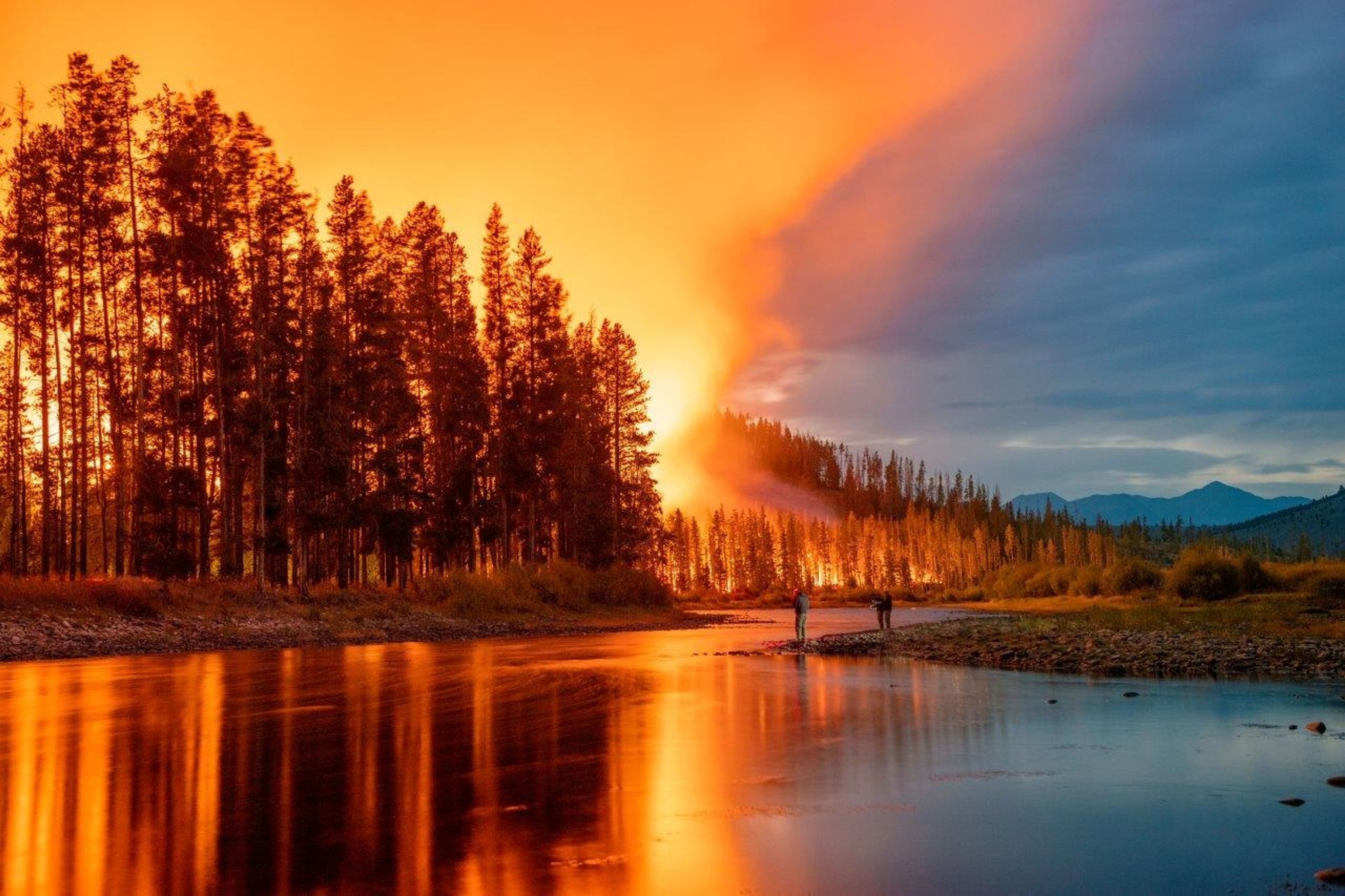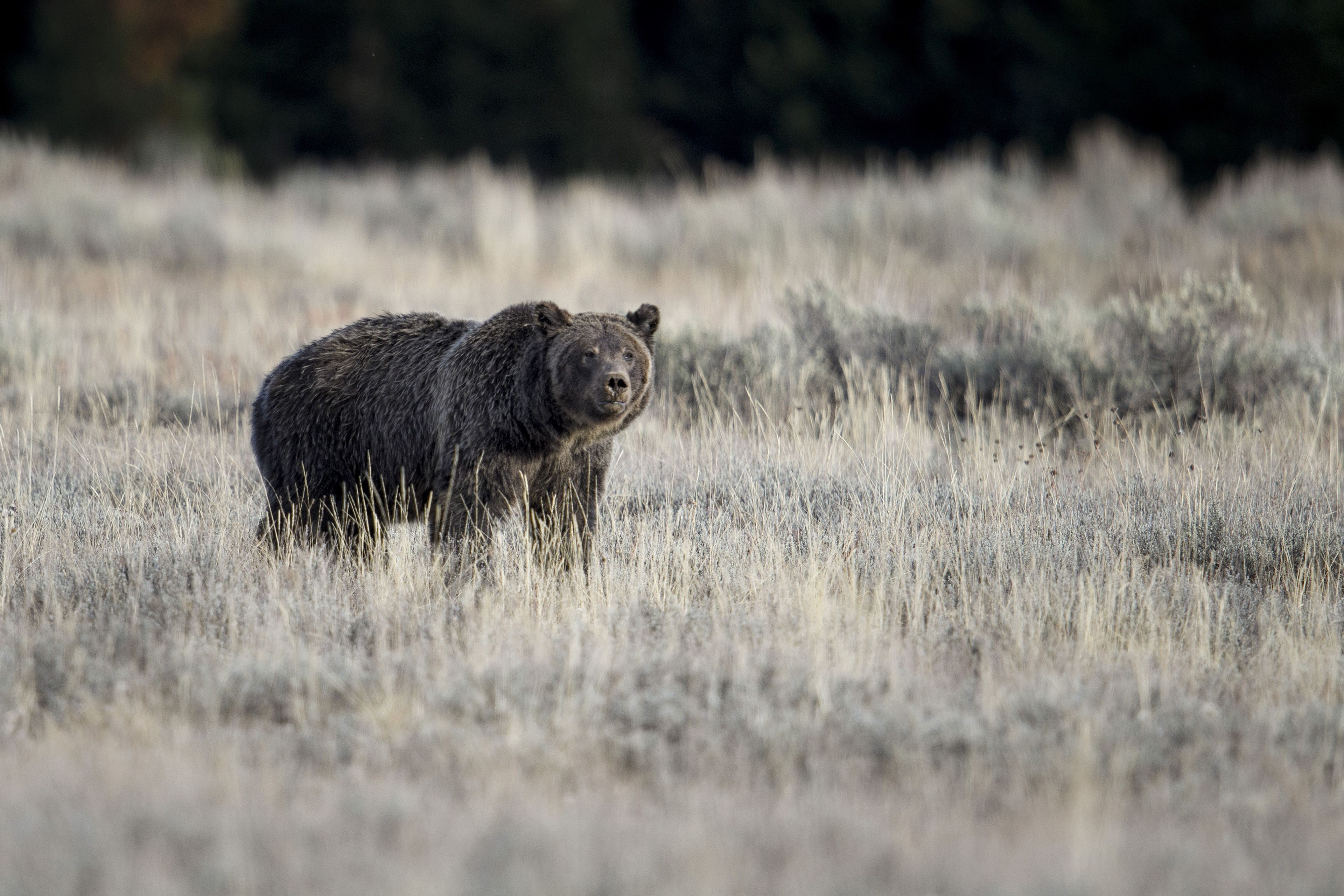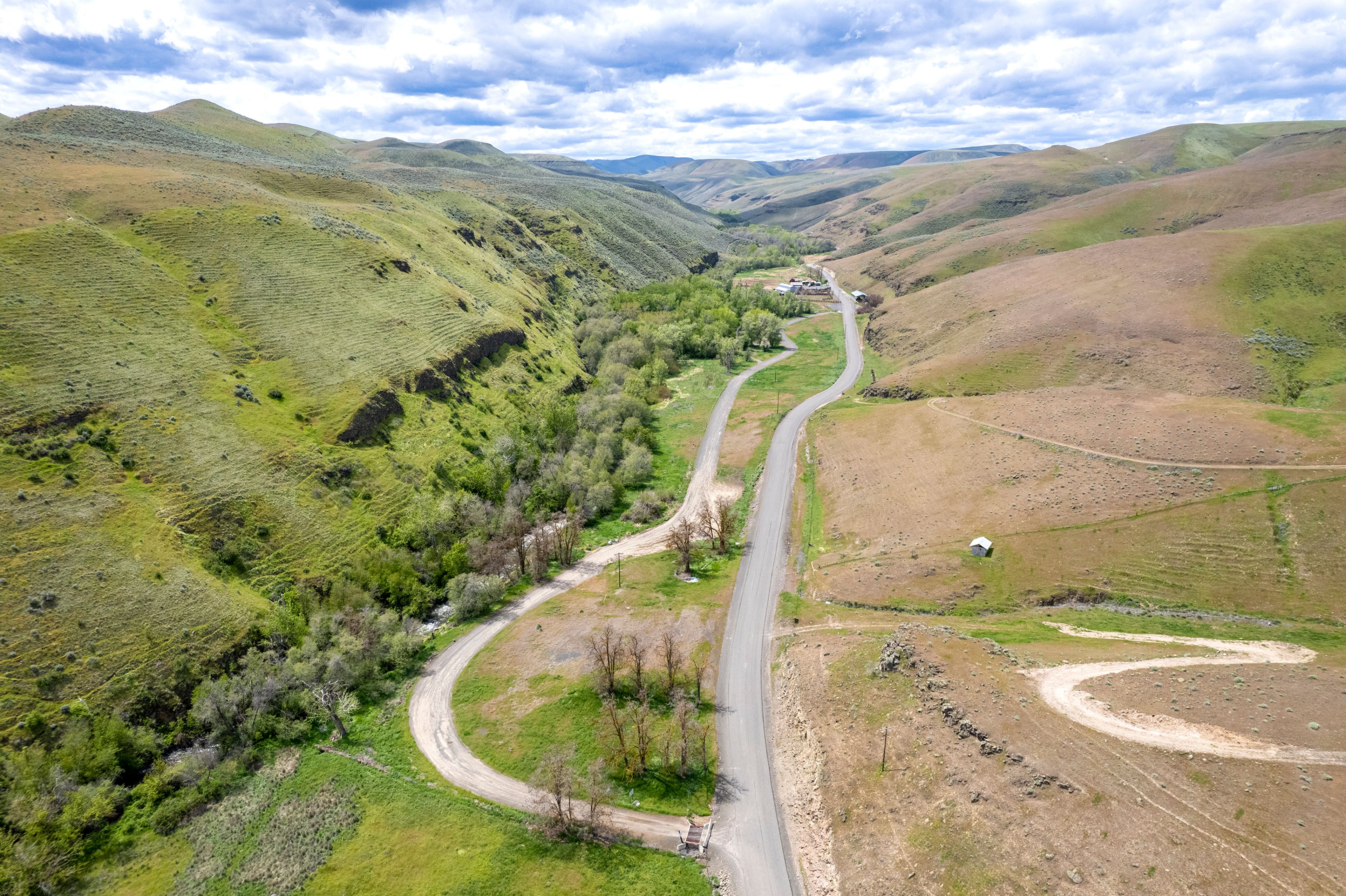Efforts to eradicate invasive trout in Idaho river a hard sell
Fisheries managers want to get rainbow and hybrid trout out of the South Fork of the Snake, but guides and anglers are reluctant to kill fish
SWAN VALLEY, Idaho — Patrick Kennedy cradled a massive trout, the kind of fish an angler can remember forever.
Every bit of 4 pounds and easily clearing 20 inches long, the ruddy-cheeked spotted wild salmonid had been subdued with electricity and then strategically hoisted with a net from the prized waters in the South Fork of the Snake River. Its next stop, before a dinner plate, was a decidedly tamer environment: the oval-shaped Trail Creek Fishing Pond dug from the base of Teton Pass near Victor.
“This is a nice fish,” said Kennedy, a new regional fisheries biologist for the Idaho Department of Fish and Game. “And it’s an important fish for the guides. If a client caught that fish, they wouldn’t want to bonk it, that’s for sure.
“You can understand the controversy,” he said.
The life history of the trophy trout sealed its fate. Every spring, cutthroat and rainbow trout mingling in the South Fork spawn batches of fry that hybridize. The strain of fish that results — including the one in Kennedy’s hands — is a cross called a “cutbow,” a variation of native and exotic trout that now must go, at least when Idaho Fish and Game fisheries crews get ahold of them.
On an outing this spring, that happened 338 times to cutbows and full-blooded rainbows in a stretch of the South Fork just downstream of where Highway 26 climbs up onto the agricultural plain leading out of Swan Valley. Over the course of this spring, perhaps 5,000 rainbows will be immobilized with electricity, netted and hauled away to six put-and-take fishing ponds that dot southeast Idaho. The effort to selectively remove rainbow trout is the next step of a controversial, challenging and likely long-lasting effort to prop up the Yellowstone cutthroat, the South Fork’s native trout that dominated the fishery as recently as the turn of the century.
For 15 years, South Fork anglers have been able to keep unlimited numbers of rainbows and cutbows. Fisheries biologists have even implanted imperceptible $50 to $1,000 money tags into the snouts of swarms of the exotic trout to incentivize the cull. Nevertheless, the catch-and-release ethic that’s pervaded fly-fishing for decades has held on, and the South Fork’s rainbow population was able to withstand the blow of more fish ending up on anglers’ smokers and grills. When Idaho electrofishing boats set out to gauge populations at a historic monitoring stretch near the Conant Boat Ramp last fall, there were more rainbow trout than ever before: an estimated 3,000 per mile, and at a proportion of more than three rainbows for every two cutthroat sampled.
“Frankly, we failed as outfitters,” said Justin Hays, general manager of the fishing outfit for the Lodge at Palisades Creek. “We were tasked by Idaho Fish and Game with helping remove the hybrids and the rainbows, and our guests didn’t want to kill fish. Our guides are troubled that they’re killing this nonnative species that they make their tips on.
“But at the end of the day,” he said, “we support the movement.”
Exotic fish
Anglers revere rainbow trout because they’re hard-charging and high-flying. Rainbows are adaptable — found in the wild in every U.S. state outside of Florida — and they’re a go-to stocker trout for fishery managers around the country, even being turned loose below Palisades Dam into the South Fork as recently as the 1980s. The species is native to Pacific coastal watersheds, including portions of the Snake River watershed downstream of the natural barrier posed by Shoshone Falls.
Unlike rainbow and brown trout, cutthroat on the broader landscape are reeling, having even been proposed for protective status under the Endangered Species Act in the early 2000s. The subspecies endemic to the Northern Rockies range exists today in only about a third of its historic five-state range. Habitat loss, climate change and introduction of exotic competitors are all factors in the long-term decline. Anglers needn’t drive farther than to the Snake’s equally famous Henrys Fork to see an example of a fishery where cutthroat are gone and their exotic comrades are thriving.
It was the cutthroat, reputed for indiscriminately eating dry flies off the surface, that made the South Fork into the “Yankee Stadium of fishing,” longtime South Fork angler and News&Guide columnist Paul Bruun said.
“It’s big water, and it’s got the fish per mile, and it’s got multiple species,” Bruun said. “I’ve seen this coming for a while. You see these mob scenes of all these rainbows where you don’t see any cutthroat.”
Bruun for years was an outspoken critic of lethal intervention to help native cutthroat trout at the expense of non-native fish, such as killing lake trout in Yellowstone Lake or remnant rainbow trout populations that still linger today in Flat Creek and the Gros Ventre River. He has since changed his tune, publicizing the about-face in the September 2015 column, “It’s hard to admit my poor trout thinking.” It’s anglers’ continued reluctance to kill, in Bruun’s view, that’s crippling Idaho’s efforts to knock back the South Fork’s rainbows.
“The only problem is the outfitters think that the rainbows are just fine,” he said. “They’re not killing them. It’s a conundrum.”
Even fishing outfitter Hays — who champions the state’s suppression efforts — said he won’t make his employee guides kill rainbows. And so they don’t. Out of the 32 licensed Lodge at Palisades Creek guides whose clients ply the South Fork’s waters all summer, perhaps just eight encourage killing, he said.
“It’s a hard sell, man,” Hays said. “We are a business that provides memories of moments for people. Killing a fish is not the memory that gets those guests to come back to us.”
After South Fork stocking stopped more than three decades ago, native Yellowstone cutthroat trout, for a while, were king. Rainbows for years were all but absent, but via natural reproduction they gradually rose back to prominence. By 2002, there started to be years in which the exotic trout was just as prevalent as the homegrown fish. Non-native brown trout, too, have held on in the South Fork, even increasing in number over the years, though they’re considered less of a threat because they’re fall spawners that don’t taint the genetics of the natives.
Fisheries managers saw trouble brewing a long way out and way back in 2004 changed the fishing regulations to allow anglers to bag an unlimited number of rainbow trout year-round. By 2010 the “angler incentive program” had been conceived. By the thousands, money fish were caught, tagged and turned loose. The program is simple: Anglers can net a cash reward in exchange for the head of a rainbow trout. But the low-odds program appeared to be having an insignificant effect — the return was only 1,500 to 2,000 rainbows a year — and was about to be discontinued, Idaho Fish and Game Regional Fisheries Manager Brett High said.
“There was a horrible chance of winning — half a percent — so we lost a lot of participants,” High said.
Anything helps
Based on the most recent creel survey, just 13 percent of caught and kept rainbows’ decapitated heads were being turned in and scanned. A research project around that time concluded angler harvest was a big factor in holding the rainbow trout population back. Managers changed their minds and kept the incentive program afloat.
The fight to save the South Fork’s cutthroat isn’t limited to killing and relocating competitors. Every major spawning stream that feeds into the river downstream of Palisades for miles is now outfitted with a weir that captures fish migrating upstream. The structures on Pine, Palisades, Rainy and Burns creeks are checked daily during the spring spawning run, and only pure cutthroat are let through. Consequently, the South Fork’s rainbow trout have lost their instinctive knowledge of these important upstream spawning grounds on Caribou-Targhee National Forest streams.
“We know that we’re having success there,” Kennedy said. “We think that we’ve eliminated the rainbow trout life histories that used to run into the tributaries, but we still see rainbow trout trying to pioneer that good habitat.”
Idaho Falls-based Trout Unlimited employee Chris Hunt, a rabid native trout proponent who once ran a blog called “Eat More Brook Trout,” underscored the importance of the weirs.
“I’m not a biologist, but I do know that what’s saving the genetic integrity of the South Fork’s cutthroat is the series of weirs along the tributaries,” Hunt said. “That’s the saving grace, right there. I’m pleased that Fish and Game has kept that effort up, despite seemingly losing the battle in the main river.”
The federal agency that makes decisions about water releases at Palisades Dam could also take a big swipe at the South Fork rainbows, which spawn a few weeks earlier than cutthroat. A strategically timed torrent of water from the Bureau of Reclamation could cause ruin to entire age classes of the non-native fish by sweeping their eggs downstream, but the flushing flow tactic probably isn’t on the table.
